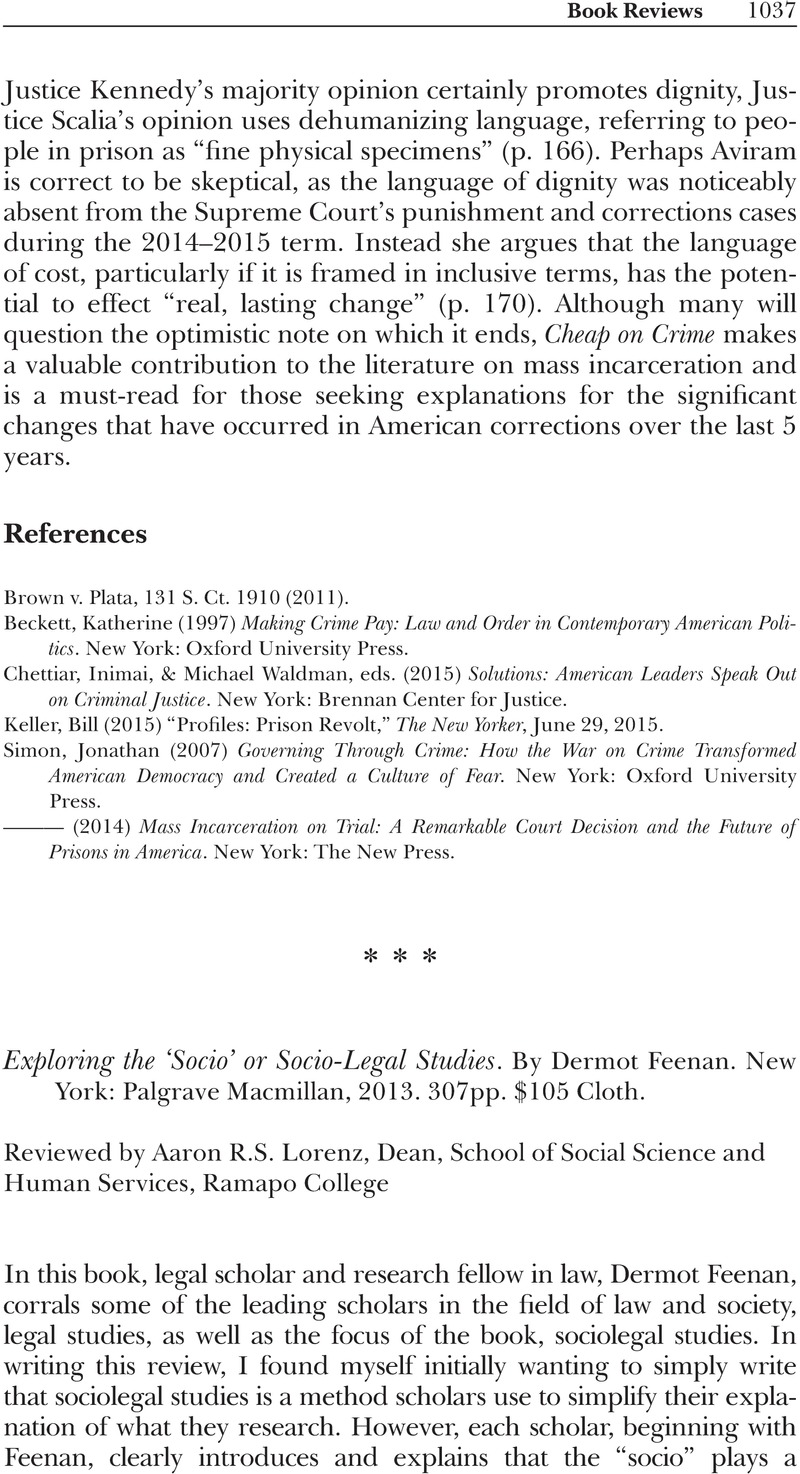No CrossRef data available.
Article contents
Exploring the ‘Socio’ or Socio-Legal Studies. By Dermot Feenan. New York: Palgrave Macmillan, 2013. 307pp. $105 Cloth.
Review products
Exploring the ‘Socio’ or Socio-Legal Studies. By Dermot Feenan. New York: Palgrave Macmillan, 2013. 307pp. $105 Cloth.
Published online by Cambridge University Press: 01 January 2024
Abstract
An abstract is not available for this content so a preview has been provided. Please use the Get access link above for information on how to access this content.

Information
- Type
- Book Reviews
- Information
- Copyright
- © 2015 Law and Society Association.

